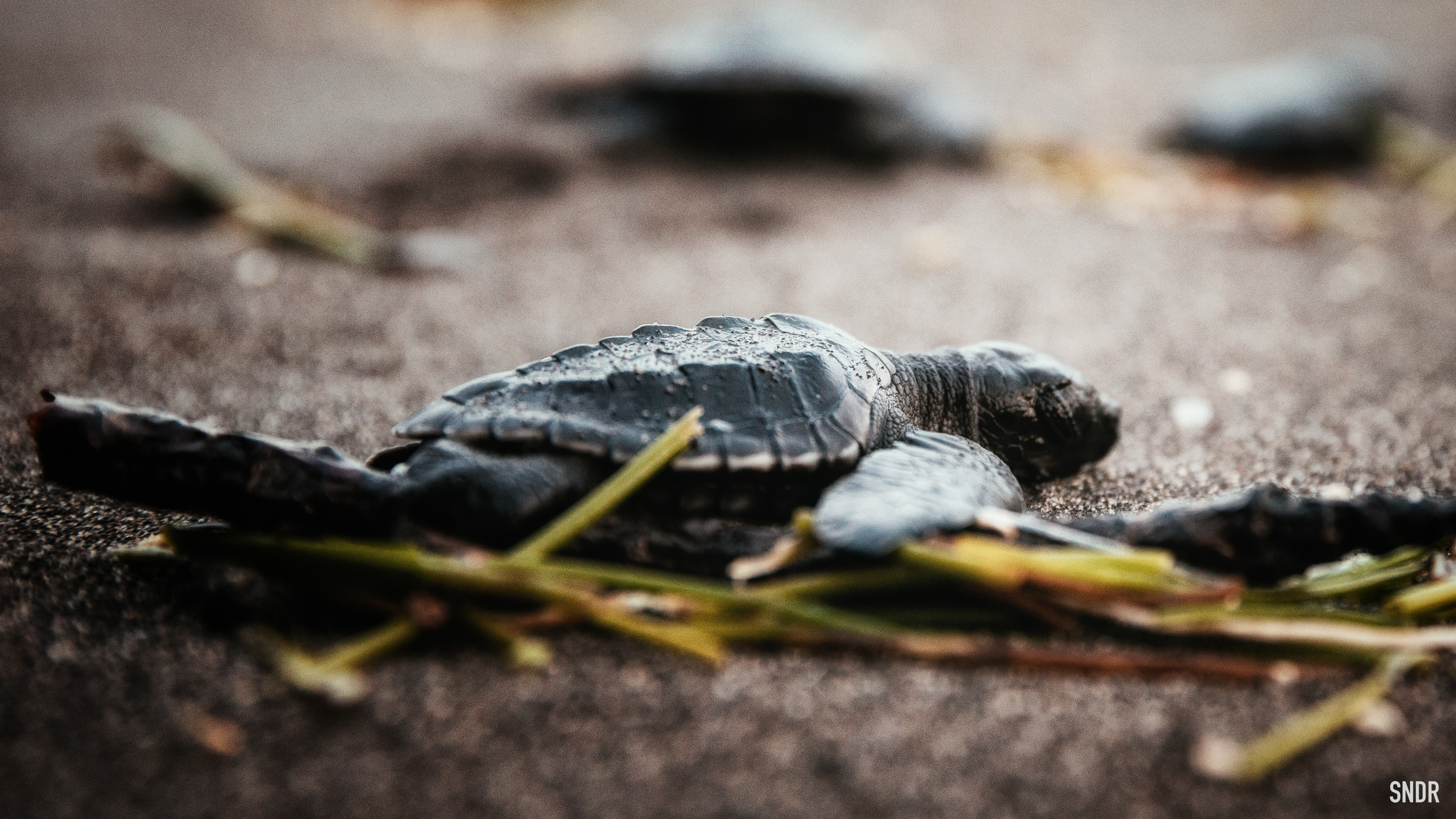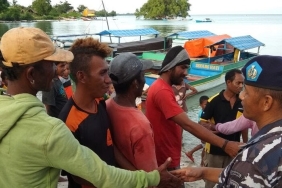SELAYAR FISHERMEN'S COMMITMENT TO HANDLING SEA TURTLE BYCATCH IS INCREASING
By: Darwan Saputra (Bycatch Hook and Line Asisstant, WWF-Indonesia)
"Gele kulle ri angka panyyu iyaa ri jolloro ka kale-kalengku, ka bakka ki anjo panyyu sissik," says Daeng Malik, a handline fisherman from Bonto Lebang village, Bontoharu sub-district, in the Selayar language.
The size of this hawksbill turtle is quite big, so I can't get it on the boat by myself, he said. He had just checked the condition of a hawksbill turtle that had been accidentally caught (bycatch) on his fishing line.
The hawksbill turtle's carapace was 0.8 meters long. Daeng Malik's fishing rod was caught on its right front flipper. Daeng Malik brought the boat closer to the turtle to reduce the pain of this Endangered, Threatened, Protected (ETP) biota.
Once he was sure the turtle was in good condition, he cut the fishing line and released the turtle back into the ocean for the sake of the turtle's survival.
Daeng Malik has just practiced the best handling of accidentally caught turtles, appropriately and in accordance with WWF-Indonesia's Better Management Practices (BMPs) for handling turtle bycatch.
In Daeng Malik's case, the turtle was immediately released from the fishing gear (API). This can be done when the turtle is in good health.
"A hawksbill turtle was caught in my gill net," said Daeng Yusra from Parak Village. "I lifted the net onto the boat to release the turtle. I immediately released it into the sea because it was in good condition, judging by the flapping of the turtle's flippers," he added.
In Selayar, there are still many sea turtles that are accidentally caught in gill nets, seros, boat nets, and fishermen's fishing rods.
Therefore, from February to August 2017, WWF-Indonesia provided assistance to fishermen in nine villages in Selayar, namely Bonto Lebang, Kahu-kahu Bonto Borusu, Binanga Sombaia, Parak, Barugaia, Mekar Indah, Buki, and Maharayya.
Fishermen were trained to handle sea turtle bycatch and ensure their compliance with WWF-Indonesia's Sea Turtle Bycatch BMPs. Through training that includes theory and practice, we continue to provide an understanding that the protection and proper handling of sea turtle bycatch is vital for the survival of sea turtles.
By conserving sea turtles, fishermen play a major role in maintaining the balance of marine ecosystems and the livelihood of coastal communities.
From the results of pre-test and post-test that we held, the level of understanding of fishermen regarding the handling of bycatch turtles proved to be quite good, with an average of 64.09%.
From March to August, we also assessed the improvement of technical understanding of turtle bycatch handling for 158 assisted fishermen. The average initial achievement was 32%. Meanwhile, the results of the second assessment for 30 fishermen, resulted in an average score of 50.93%.
Indeed, the assisted fishermen still need regular understanding and assistance both in terms of handling turtles caught accidentally and in the process of recording (logbook) which stores locations that are often caught turtles, size, and type of turtle itself.
From the results of both assessments, compliance with the turtle handling mechanism still needs to be improved. Selayar fishermen should consistently handle accidentally caught turtles appropriately. Not only during training, but also on boats at sea.





